It was already getting dark and we still had no place to sleep. We had woken up in Otjiwarongo, in the north-central part of the country, where we said goodbye to Núria and Susana, two off-road friends with whom we shared the first 15 days of traveling in Namibia. Now, it was around 5pm and the sun was starting to recede just in the opposite direction to where we were heading: the Caprivi strip.
We had lived a day of road and music along the B8, a route of more than 900 kilometers that connects Otavi with Ngoma, the entrance to the border country of Botswana. The landscape was beginning to be different from what had preceded us days ago. The desert gravel roads, dunes, dry landscape and the amount of miles we had driven totally alone were now transformed into small villages along the road. There, groups of children of different ages played on the sidewalk and greeted us when we passed the car by their side, the adults rested and talked under the large acacias that bounded next to the route, donkeys and herds hid among the humans and camped aimlessly while some of them were crossing the asphalt. Many kilometers made in a route of a great straight line with different routes that branched off towards the different villages from not more than ten houses that were near the main route. We entered the Caprivi, a strip of about 400 kilometers from west to east and only 25 from north to south on the map of Namibia, where the black population predominates, much of which moved during the twentieth century due to apartheid and genocide from last century. This area borders on the east with the Zambezi River, a natural border with Zambia and Zimbabwe; to the south with Botswana; and to the north with the Okavango River which is the natural border with Angola.
The history of the Caprivi strip has its origins, like much of the countries of the African continent, in the colonial disputes of the European powers. In 1890, a contract of territorial exchange was signed between the Germans and the English. The former wanted to unite the colony of West Africa (known as present-day Namibia) and Tanganyika (known as present-day Tanzania) and wanted to do so via the Zambezi River, whose access was in the hands of the English. The latter, as a currency of exchange, demanded the island of Zanzibar, and the German territory of present-day Kenya, with the aim of building a railway line linking Uganda with Mombasa, with access to the sea. The Germans accepted and reached this territory known as Caprivi and which reached the Zambezi River.
The game, however, went wrong for them because the Zambezi River was unseaworthy. The Germans were unaware of the existence of Victoria Falls, a few miles away and discovered by English explorer David Livingstone in 1855. These falls made it impossible for them to continue downstream with the goal of reaching Tanzania. They had lost the island of Zanzibar and an important part of present-day Kenya, but they had a new stri of territory that was Caprivi and has continued to be part of Namibia to this day.
It was around 5pm and we had already been driving for over 5 hours. We had just left behind the village of Rundu, the gateway to the Caprivi strip. The next town was Divundu, about 200 miles from where we were. So we decided to look for a camping area to spend the night and continue the trip the next day. But we never thought that that night stop would become an unforgettable experience that changed our trip and left us with a very close bond that will accompany us all our lives.
We deviated from the main road following the course of the Okavango River and looking for a campsite that was marked by GPS but never showed up. To our left we could visualize Angolan territory as we advanced aimlessly along a dirt road that ran around small camouflaged villages in the middle of fields and riverbanks. We had been driving on those roads for some time, and the sunset was approaching. So, we decided to stop in a bar we found next to a big acacia to ask if we could sleep somewhere. They told us that we had to ask permission to the head of the village who lived with his whole family a hundred meters back from where we were standing. We were in Shitemo, a small town of romanyo origin led by the Nguema family.
At the entrance we were greeted by a girl who told us that Nguema had not yet arrived, so we left the car outside the fence and entered to the yard to wait for him. The family house of the head of the village consisted of small houses made of mud, covered with branches of different trees and with a large courtyard in the center of the place with a fire lit and where different members of the family gathered. They were preparing dinner. Surprised by our visit, they invited us to sit in the only two plastic chairs they had (the typical bar ones) while the little ones looked at us curiously.
We started talking to Steven, a 20-year-old boy who was a son of Nguema. He spoke English well enough and none of us knew he would be a lead actor that night. Among those present were his sister, Sandra, who was pregnant, and his grandmother, who was quite old, with wrinkles on his hands and face.

It was getting dark and we still didn’t know where to sleep. We started playing the guitar knowing that music unites cultures, and while we were enlivening the evening between waka-wakas and siahambas, Nguema appeared. Dressed in military trousers and wearing sunglasses even though it was already dark, he was a tall man with the face of few friends. It became clear that he was the head of the village and who made all the decisions. He stared at us and asked to his daughter who we were and what we were doing there. Wwe, with an impatient smile and a pleading look, commented that we were looking for a place to camp in his village and were asking him to give us permission to sleep in some open field near the river. He told us that it was too late and that we would be safer under his protection, so he gave us permission to camp inside the courtyard of his house. That night we already had room to sleep, although we couldn’t do much.
It was already dark and we still had dinner. The family sat by the fire eating a kind of tuber characteristic of their crop mixed in a soup. They were sharing the dish between a whole gang. There were more than 10 people, and probably that night some of them would not eat more than a spoonful. We cooked ourselves a quick chickpea salad next to our car and seeing the situation, we brought some bread and the chickpeas to the campfire to share with everyone of the family. Nguema ate the bread in bites, without any accompaniment, as if it were the best food on the planet at that time; and Sandra made spoonfuls of chickpeas constantly moving to find the right position with that belly so big she had. Laia commented in a low voice that the girl was about to give birth, that she had a very bad face and that, moreover, it was a full moon night. She remembered that her nurse sister always told her that during full moon nights, births were more frequent. Esteve said it was impossible.
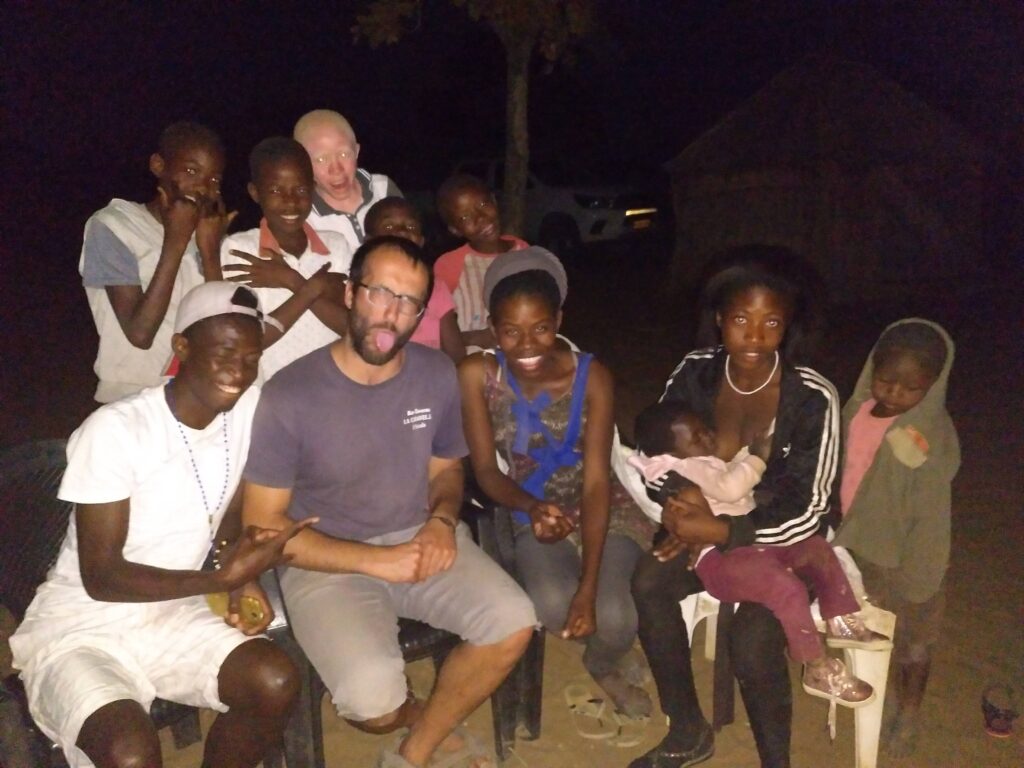
After sharing stories around the fire, we decided that the next day we would go to the river with them and continue our route along the Caprivi strip. As we entered to the roof tent, the mother quickly called Laia. It turns out that Sandra had broken water and there was no vehicle in the area that in those stormy hours could accompany her to the nearest hospital, which was in Rundu, about 80 kilometers from the village of Nguema. We looked at each other and immediately understood that we were the only ones who could accompany Sandra that night to have a supervised and fit birth, both for her and for the baby.
We quickly folded the tent and headed to Rundu with Esteve’s co-pilot Sandra, followed by Laia, Steven, mother and grandmother. Maternal figures are very important in the accompaniment during childbirth. It was dark and Steven was guiding us down the road until we found the main road. Although we could not drive at night because we were absolutely forbidden by the renting company, we accelerated on that paved road where hours before it was crossed by animals and children played on the sidewalk.
One hour later we arrived at Rundu Hospital, a set of empty ground floor buildings. When we got out of the car with Sandra panting and opened the front door to the maternity ward, we never imagined what we saw. That hallway was full of pregnant women, some lying down, some standing and some sitting in the few chairs of the hospital. There were screams and moans of pain. The atmosphere was crowded, it was very hot. Indeed, it was a full moon in Rundu and the nature of all those women had coordinated to give birth on the same night. The nurses told us that they were saturated and that night would be very long.
Sandra entered to the exploration room, and a while later (which became eternal) we were told that this part would last a long time. We had better leave and go back early the next morning to see if there was any news. In Rundu, women give birth alone, without the company of any relatives. So we drove again the 80 kilometers of paved road to the house of the Nguema family, nervous about how it would all go.
The next morning, very early and with almost no sleep, we stood in front of the hospital door. There, we were told that we had to wait outside, that the birth was being difficult and the mother was in danger. At that time, it occurred to us if people there would associate us with an evil spirit. Africa is a continent where magic is very present. But quickly, these thoughts went away while we were anxious betting with Sandra’s mom and grandma on whether they preferred a boy or a girl.
We spent the morning wandering outside the hospital grounds practicing our Oshiwambo (one of the most widely spoken languages in Namibia). The venue was full of people waiting to hear from their relatives. Really, we were two strangers in that place.
The good news came with a cell phone message that Steven showed us. It was Sandra, she had already given birth and both she and the baby were in good health. After a while, they would let us see them. Doors only open from 2pm to 3pm.
When it came time to visit, everyone gathered in the hallways to look for where his family was. We found Sandra in a room with about 7 other mothers who had also given birth that night. When we entered, Sandra’s grandma started talking to all of them, explaining why we were there. They looked at us in surprise and smiles, as we saw Sandra with her baby in her arms.
Both, the mother and grandmother were very happy to have a new member to the large Nguema family. And more, because they had won the bet: she was a girl! After chatting for a while and looking at that girl who should be less than 12 hours old, Sandra introduced her to us: “Laia, I introduce you to Laia!”. And emotions erupted as Sandra pulled the baby into Laia’s arms to grab her. A series of chants and applause resounded throughout the room.

When the visit was over, we returned to Shitemo, where Nguema was waiting for us next to the acacia outside the village. This time he was smiling, grateful for everything we had done, and that everything had gone well. To celebrate, that night we would have a big party all around the fire commemorating with dances and music that a new life had been born that day.
There we were, celebrating life in a simple way, with a glass of Coke, pounding barefoot on the ground and looking at the sky where the moon was already on its way to the waning quarter.
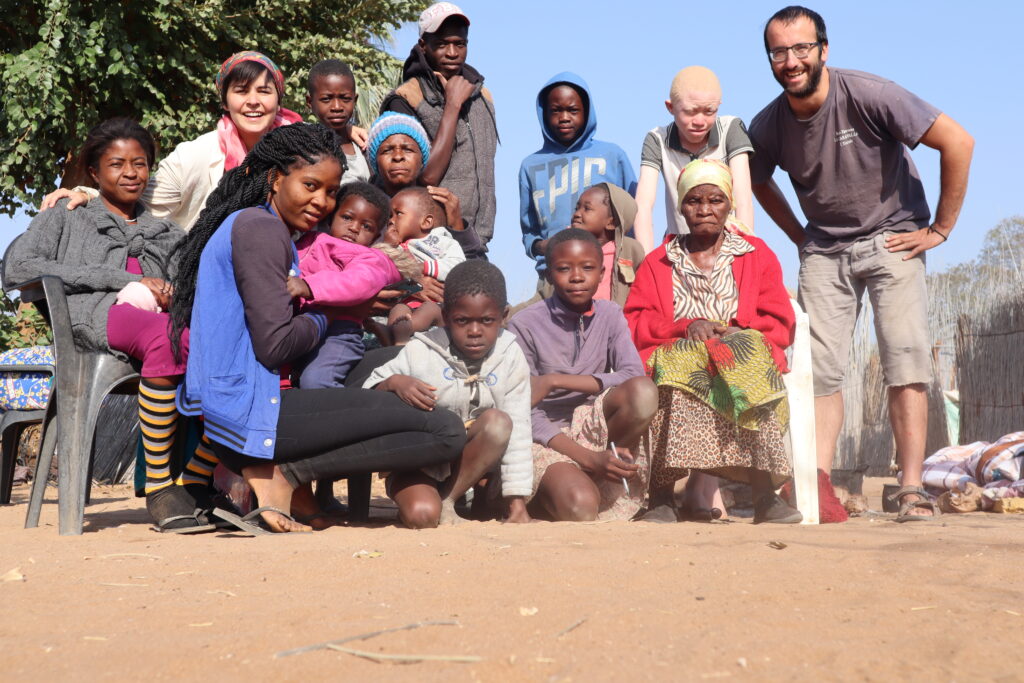

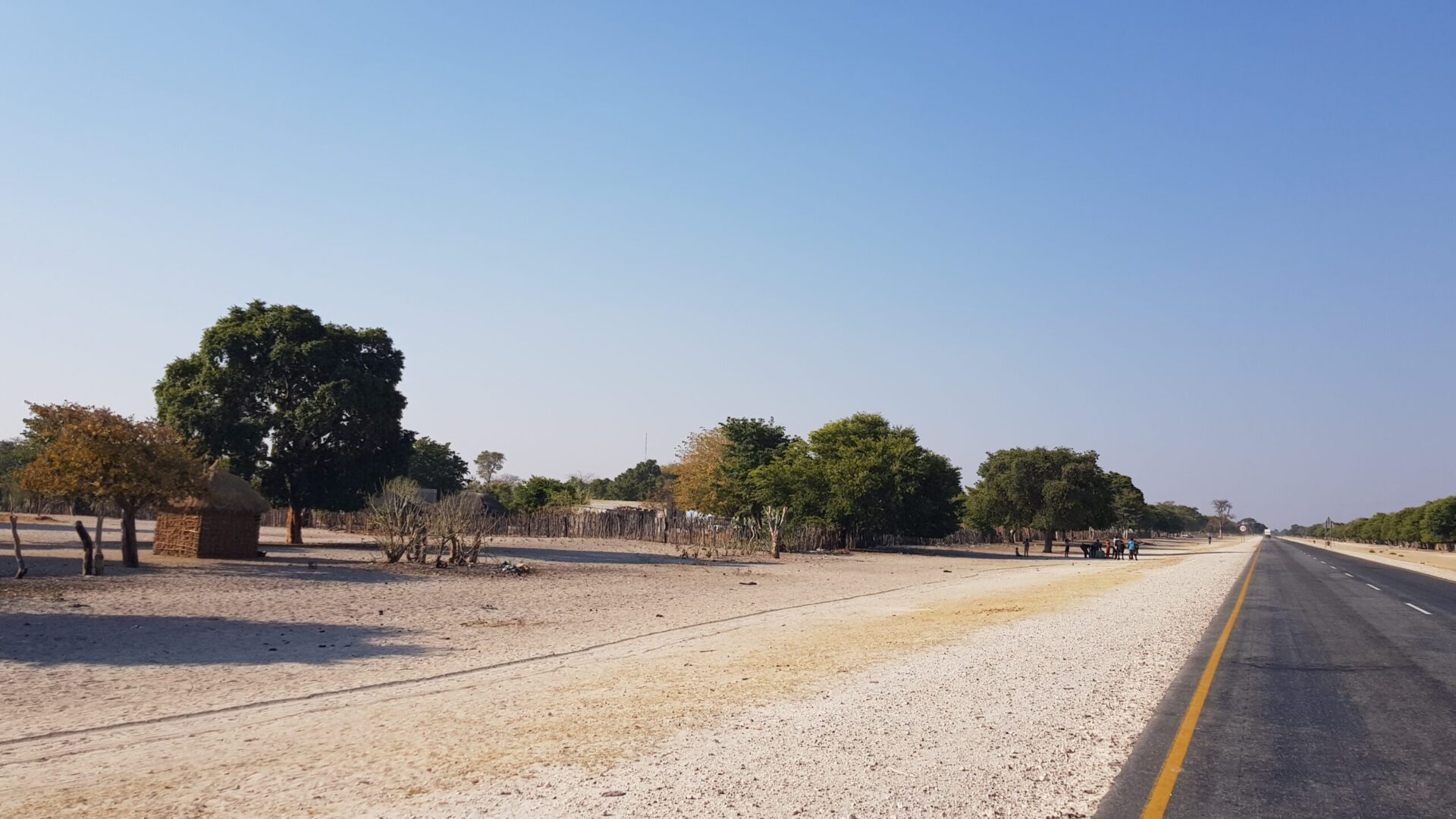

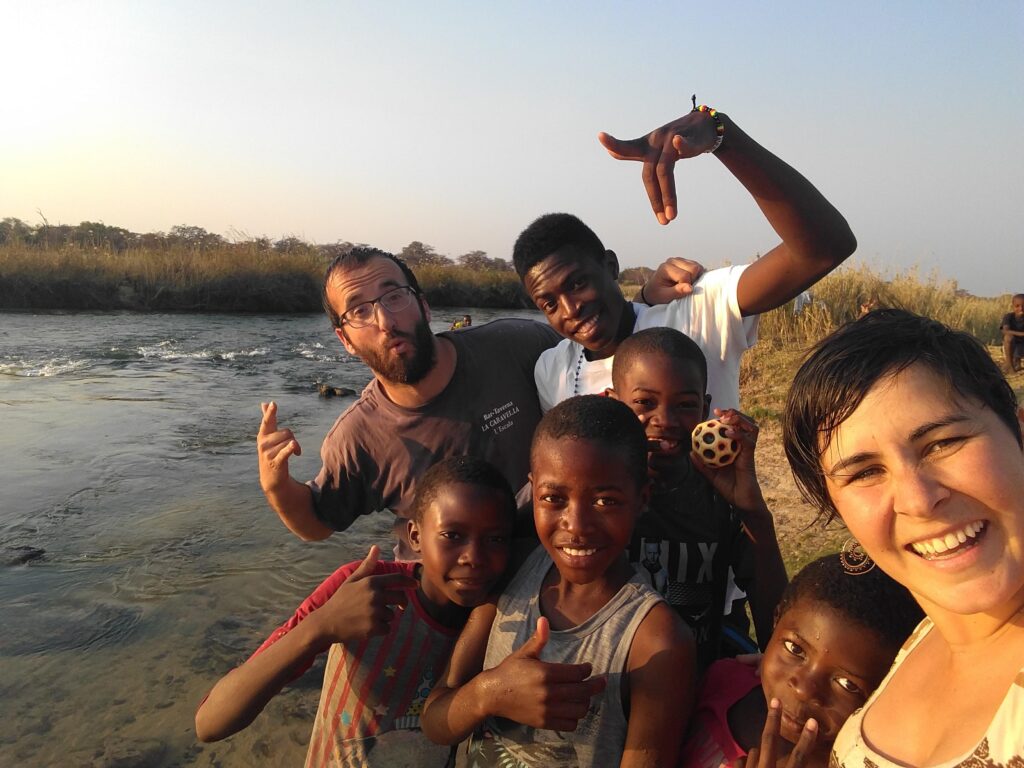
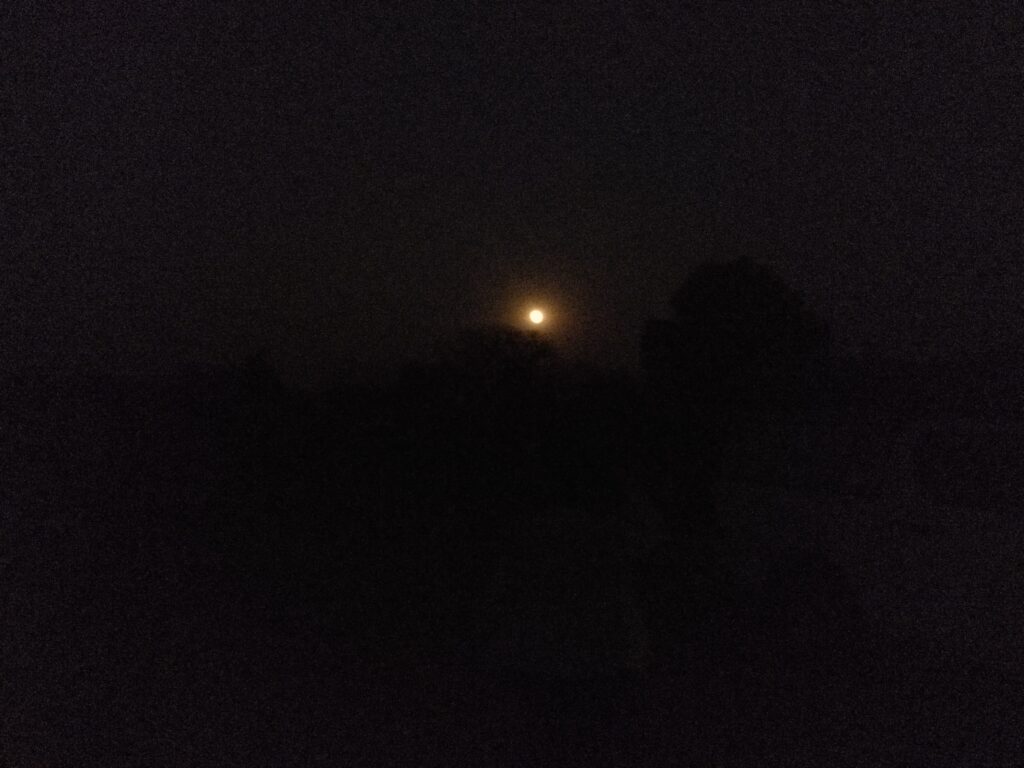


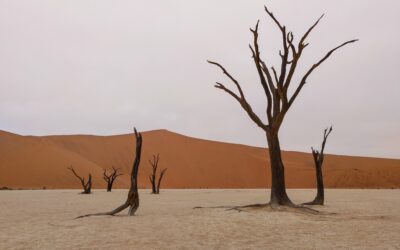
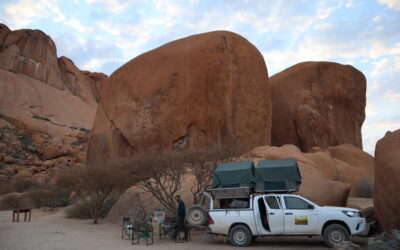
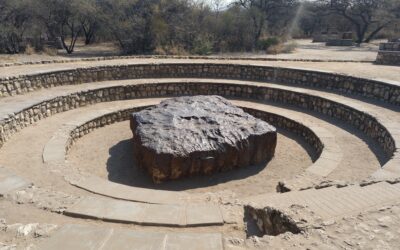
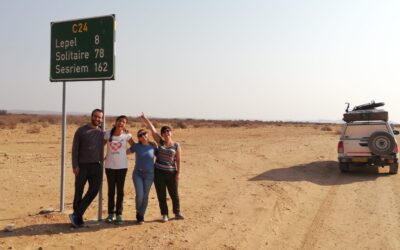

0 Comments